#Okinawan altar
Text
とぅしぬ ゆーる♪大晦日♪
うちなーぐちぐゆみ12月9日(うらんだぐゆみ2022年12月31日)

ちゅーや やまとぅぐゆめー とぅしぬ ゆーる なとーびーん。
とぅしとぅい ちゃわき しきとーびーん。
すばん くゎっちーん むる すがいびーたくとぅ、みそーりよー。うーとーとぅ。
―
今日は新暦の大晦日になっています。
大晦日の夜のご飯お供えしています。
沖縄そばもご馳走も全て作りましたので、召し上がれ。うーとーとぅ。

#うちなーぐち とぅしぬゆーる#うちなーそーぐゎち#とぅしぬゆーる#大晦日#沖縄正月#沖縄大晦日#2022年最後#くゎっちー#とーとーめー#Uchinaaguchi tushinu yuuru#Uchinaa soogwachi#New Year's Eve#Okinawa New Year#31 December#Ryukyu#Tootoomee#Okinawan altar#Okinawan tradition
0 notes
Text
November: Loss & Life
From the cooling weather to the turning colors of the leaves, Autumn is a time of transformation and reflection. Of mourning and celebration. It's a bittersweet season; the falling leaves remind us that in the sorrow loss, there is also great beauty in letting go.
Accordingly, the All Valley Skills Challenge theme for November is:

Below, you will find this month's prompts. Our mods have created a series of moodboards, each inspired by a Festival of the Dead from a culture represented in the Karate Kid and Cobra Kai universe. We've also included a short description of the unique traditions of each:
(Moodboards by @idontknowkaratebutiknowcrazy, @desolateice and @wicked-jade.)

Dia de los Difuntos - Ecuador
Celebrated on November the 2nd, and coinciding with All Souls Day, Ecuador's Dia de los Difuntos (Day of the Deceased) is a holiday that combines Catholic tradition with the death rituals of the indigenous Quechua people. On this day, families gather to honor and celebrate the lives of loved ones who have passed away. Traditionally, they visit cemeteries to clean graves and to bring gifts of flowers and food to share with those they've lost. The belief is that the food will help give souls strength for their journey to the afterlife.
Stalls selling guaguas de pan (bread babies - a sweet bread piped with colorful icing, shaped to resemble a doll or baby) and colada morada (a thick, dark purple corn drink, served hot) line the streets, along with vendors selling other treats and grave decorations. In rural areas, it is common for families to dress in their finest clothes and share a picnic together in the cemetery. The festivities also often include carnivals and parades.
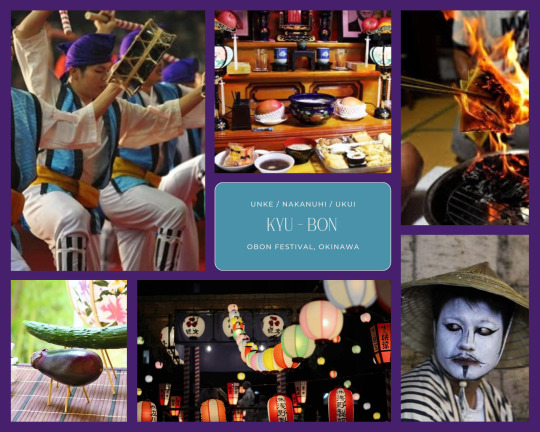
Kyu-Bon (Obon) - Okinawa/Japan
The Obon Festival, also called Kyu-Bon in Okinawa, is celebrated throughout both Okinawa and Japan. While the holiday is based on the solar calendar in mainland Japan, in Okinawa, it follows the lunar calendar. This means it can fall anywhere from mid-July to early September. Always starting on a Monday, the celebration lasts for three days. It is customary for Okinawans from all over to Japan to return to their hometowns, in order to observe the holiday with their families.
On the first day (Unke), families hang glowing lanterns outside and leave their doors and windows open, to guide and welcome the spirits of their ancestors home. They also leave offerings such as sugarcane sticks and uchikabi paper (money for the afterlife) on the family altar.
On the second day (Nakanuhi), families prepare food, visit other relatives homes, and exchange gifts.
The final day (Ukui), is a time for feasting, celebrating, and sharing stories. Prayers and goodbyes are said before sending the spirits back to the afterlife. Food, handwritten notes, and uchikabi paper are placed in a large bowl as a gift for the ancestors. The contents are then burned, so the spirits can take the offerings with them when they go.
Over the course of the festival, colorfully clad Eisa dancers march through the streets, entertaining both the crowds and the spirits by dancing, chanting, drumming, and playing folk songs on the sanshin.

Chuseok - South Korea
Celebrated on the full moon of the 15th day of the 8th month of the lunar calendar for about a 3 day holiday. People return home bearing gifts, visit and clean grave sites, and share a feast.
Parts of these feasts include songpyeon (a type of colorful rice cake), types of Hangwa like the honey cookie yakgwa, fruit, baekju (a type of alcohol), jeon (savory pancakes), japchae, bulgogi and more. Food will also be set out at a in-home memorial for the ancestors and those who've passed.
Games are played like Yut Nori, as well as sports like Ssireum (a type of wrestling), and Taekkyon (a type of martial arts). There is also a dance, Ganggangsullae.

All Souls Day (Il Giorno Dei Morti) - Italy
Also coinciding with All Souls Day, Il Giorno Dei Morti is the Italian Day of the Dead. While November 1st (All Saints Day) is the day to honor the Catholic saints, November 2nd is reserved for honoring dearly departed loved ones. On this day, families flock to cemeteries in order to pay their respects to the dead by lighting candles and laying flowers - customarily, bouquets of chrysanthemums - on their graves.
In Sicily and other parts of southern Italy, parents will hide small gifts, such as toys, sweets and Pupi ri Zuccaru (sugar puppets) around the house for their children to find. The children are then told that the gifts were left for them by their deceased relatives, who came to visit them in the night.
Traditional foods vary from region to region. Pan dei morti (bread of the dead) is consumed in almost every part of the country. Other treats include Frutta di Martorana (marzipan sweets from Sicily), and Ossa dei morti (bones of the dead - crunchy, almond-flavored cookies that are shaped to resemble bones.)
You will have one month from today to create and submit fanworks inspired by this theme. This is your chance to show off your creative skills, whatever they may be. From writing, to art, to everything in between. Our goal is to encourage all forms of creative expression within the TKK/CK community. All pairings and ratings are welcome.
This round will officially close on Monday, November 30th at noon, CST, so if you would like for us to share your works, make sure to submit them before the deadline. Tag us @allvalleyskillschallenge and #allvalleyskillschallenge, to make it easier for our mods to find and reblog your works!
We’ve also created an AVSC Collection on ao3, if you would like to add your works there. We highly recommend that artists who wish to share uncensored, NSFW content do so on ao3, to avoid violating tumblr’s guidelines.
Please check out our FAQ for more details. If you have any further questions, feel free to contact us at @allvalleyskillschallenge, our asks are open.
#allvalleyskillschallenge#avsc: november 2023#theme: loss and life#the karate kid#cobra kai#fandom events#announcement
38 notes
·
View notes
Note
In episode 8 there is a scene where Reki is sad while watching TV. What's on the left side of the tv?
I assume you mean this shot.

That's a butsudan. They're family altars to honor your dead relatives.
This is specifically an Okinawan version. Here's an example I found on the internet.

Top row: Tiles with decease family member's names. Each vertical tile pair is one generation. Generations are from right to left, oldest to newest, husband on top row, wife on bottom row. The front of the tile is inscribed with their death name, the back of the tile is inscribed with their life name.
Second row from top: Water and tea offering to the deceased family members. A new offering is made daily.
Third row from top: Incense bowl and candles. Incense is burned along with the water and tea offering in the morning.
Bottom row: Food offerings.
Of note is that this scene is set around the time for Okinawan obon (or kyuubon) according to my timeline theory.
42 notes
·
View notes
Text
Worshiping at your altar
“He confesses how long he’s looked
for a place to worship
and, oh, you put him on his knees.”
PROFANE by Ashe Vernon
A Paladin and an artificer fall in love.
Or- how Langa learns that worship comes in more than one form.
ao3 link: https://archiveofourown.org/works/30430242
-.-.-.-.-.-.-.-.-.-.
One of his earliest memories is this:
He sits by his father’s feet. They are in their living room, in his childhood home back in Canada. There’s a fire crackling behind him, the warmth of the flames licking his back even from the distance. His mother’s steps could be heard in the kitchen, but he can barely focus on that, utterly entranced by Dad’s stories, by the hand softly combing his hair back. He feels safe, comfortable and probably the most at peace he’s ever been.
“A lot of people are going to get hurt tomorrow. All we can do is stand in the way of that and say, 'Not them. Me. If you need to hurt someone, hurt me'”, Dad reads. Langa’s tired eyes look up, eyes tracing the golden letters on the spine of his father’s favorite book, the tale of ‘How the Paladin Got His Scar’. “Because the alternative is to look at someone else, someone weaker and more vulnerable, and tell them that you want them to be hurt instead of you.”
He squirms a bit in place, and Dad waits, just like every time they reach this part. He’s heard this story hundreds of times, could probably recite it himself from memory alone, but this passage is one that never fails to make him feel off. Weird, uncomfortable. As if he’s failing in some way, because…
“I don’t get it”, he says, like clockwork. Dad’s stopped reading, a single finger keeping the page bookmarked, in preparation for Langa’s usual interruption. Back in the kitchen, his mother’s footsteps fade away, as if she, too, is waiting for her son to ask. “Why do I have to hurt in someone else’s place? I don’t like to be in pain...”
As always, Dad smiles. He’s never mad about Langa’s selfishness, but, again, a five year old can’t really be expected to understand self sacrifice like this, no matter his Class. He never stops patting Langa’s head on his lap.
“It’s not about our pain. It’s about others’ joy.”
There’s usually where it stops, his curiosity sated, and lets Dad go back to his reading and Mom to her cooking. But Langa remembers something else, a new question bubbling up from him. He was in that age, Mom would say, where children stop taking everything their parents say at face value.
“But I thought us paladins were supposed to only serve a God? Why should we care about other people?”
It sounds awfully mean, he knows, but his father only laughs.
“We are not Clerics, son. As much as divine beings love us, we’re not bound to them. That’s why we have our Vow, remember? We can choose. I wasn’t forced to serve the Snow Deities, I wanted to do it. And I never regretted it.”
Langa’s frustration only grows more.
“But I don’t want to do that! To… to give...me-self…”
“Myself”, he remembers Mom calling softly from the doorway, but never how or when she got there. Only his father’s patience as Langa tried again:
“I don’t want to give myself away like that.”
“That’s because you haven't found your Worship yet, Langa. You’ll know, when you do. Because taking your Vow…”
-.-.-.-.-.-.-.-.-.-.-.-
Moving to Okinawa feels strange, in more than one way.
For starters, it's weird to adore the Snow Deities with no snow in sight. But, to be completely honest (as he tends to be), he hadn’t felt any real pull in his nightly adoration. Not ever since his father died.
(How could he offer sincere praise to the beings that sent dad to his death?)
Still, he kept up with it. As a Paladin with no Vow, he’s taken to adoring the Snow Deities the same way a chronic smoker would use an e-cig. Not the same, not nearly as invested, but it scratches the itch he can feel building inside him (his divinity begging for release, for reverence, for him to fall to the ground in awe) just well enough that he doesn’t go insane. It’ll be different, once he’s worshipping for real, his mom tells him. He’s not overly enthusiastic about the idea.
Something else that’s different is the quests. Official ones are offered in schools or extracurricular centers, just like back home, but he can’t even begin to imagine himself fighting his way through forests instead of frozen mountaintops. And just what creatures would he even be fighting? Snow Wassets, Kamaitachis, Wendigos… They were all born from ice, and darkness, and cold. Not exactly your native Okinawan monster.
He sighs, head resting against the car window. Watching the trees fly past as mom drives them to their new place, he starts to feel the itch under his skin again. Moving so far away had helped, the deities’ reach weak against the warmth of this land, but still notable enough to demand attention.
It’s annoying, painful at times, and the last thing he wants to do after losing his dad- but he closes his eyes, spite burning at his core like acid, and adores.
-.-.-.-.-.-.-.-
He’s laying on the floor- no sword in sight, vulnerable, helpless to this person approaching him at high speed, unrelenting- but the pain never comes.
Opening his eyes, he looks up. And time stops, just like it did every time Langa interrupted his father during story time for a question. The world itself holds its breath, waiting for him to catch up.
And he stares at this boy, suspended above him. He sees his red hair, contrast jarring against blue skies. Sees golden eyes, bright and open and full of a life that seems to be avoiding him.
His senses are telling him- he’s a human. There’s no divinity in him, no godliness.
But his heart beats hard, almost pushing his chest open, and he’s breathing the air this boy left behind when he jumped over him. And he feels a spark catching fire behind his eyes, travelling down to his stomach, and nesting there in a way that suggests ‘I’m in no rush to leave’.
And he thinks, briefly- no one ever told me that Fire Deities liked to skate in Okinawa.
-.-.-.-.-.-.-.-.-.-.-.-
He learns the boy’s Class before his name. He’s an artificer, and he’s called Reki.
He thinks it means something, that he introduces himself like that, but Langa isn’t sure what, because all he can hear is an echo of his voice and the afterglow of the smile he shoots his way.
Reki becomes too much, too fast. He shows Langa his favorite invention, a magic skateboard, and he himself feels instantly charmed by the simple genius he exudes. He’s helpless as he follows Reki to the shop he works on, where he finds himself employed as well before he can even catch his bearings. Something about his divinity being harnessed for potions, and protecting the store. He’s not hearing very faithfully, but it sounds good enough that he nods. Without his weekly quests to the mountains, there’s few other ways for him to earn his own money and help support his mother. Though he can’t deny he’ll miss the thrill of it...
Then Reki takes his hand again, and he solves that problem as well.
The S circuit, an illegal quest spot. A rocky mounting, with its surrounding forest littered with abandoned buildings, chock full of all sorts of creatures to hunt, or other adventurers to spar; not for the money, or the honor, but for fun.
Fun is a weird concept for Langa, these days, but he can’t deny the thrill he feels when he burrows Reki’s sword (it's not like the other boy can use it, with his hand hurt as it is) and forces the man that wanted to bring pain to his new friend to the ground. When he’s standing up, looking down at this Rouge, hearing Reki’s excited screams getting closer and closer until the boy is near enough to jump to Langa’s arms, he thinks… that if this is what Dad felt on his quests, it’s no wonder he gave up his life in one of them.
-.-.-.-.-.-.-.-.-
He’s never met an artificer before, and Reki has never encountered a Paladin either. It's an experience for both of them.
Reki seems determined to make Langa a new sword, one that adapts to the training he received back in Canada but that he can use here, in S. It’s a challenge for him, he says, and Langa doesn’t mind the long hours spent in Reki’s workshop, as the boy tries new materials, different welding techniques and a wide variety of spells, exchanging questions back and forth.
Learning about Reki feels a little like when Dad taught him how to fight, everything new, shiny, a little scary but at the same time so safe. He finds out that his friend still hasn’t decided on a specialty, and that choosing one is in a way a little like a Paladin taking a Vow, and at the same time, nothing at all. They focus on a single path, do their best to become masters of it, but once it's perfected, they are free to pursue a different one. He’s secretly enchanted by the idea- the freedom of it. Or maybe it’s just Reki that makes him feel like that.
“I thought you guys just… fought for good? You know, to save people, end wars, stuff like that?”
Langa lays back, weight resting on his arms as he looks up to the stars . They are outside for a change, as Reki is trying to cast a few attack spells on the sword (as in, writes runes and splashes potions over the blade, occasionally cutting himself on it; Langa longs to take it away from him before he loses a finger), and refuses to do so in the relative fragility of indoors. The night sky is very pretty, the company is good, and he feels too comfortable for someone sitting on the ground.
“That’s what’s told in schools and stories, but reality is different”, he answers, eyes dancing between the stars and Reki’s eyes (just as bright, just as pretty). “‘Good’ and ‘bad’ are very subjective terms. What’s alright in some cultures is a sin in others.”
“One man’s heaven is another man’s hell”, Reki murmurs, stopping his motions as he thinks Langa’s words through.
Langa nods. “Paladins- we do have a connection to the Gods, in a way. So it’s very common for us to give our Vows to them. But, unlinke Clerics, we’re not irredeemably bound, so there’s more of a choice factor. A Paladin can give their Vow once in their life, and then has to commit to it, but that we can decide who or what to Vow to is our form of freedom.”
Reki looks back at Langa then, sword almost forgotten in his lap. They were sitting quite close, now that he thinks about it, barely enough space between them to fill with a whisper. His entire right side felt scalding hot, like when he was a child back home and sat a little too close to the fireplace.
That heat spreads to the rest of his body when Reki throws his head back and laughs.
“That’s the longest I’ve ever heard you talk, dude!”
Time resumes, the night moves on, Langa walks home. But the warmth never leaves his body.
-.-.-.-.-.-.-.-.-.-.-
Reki being an artificer doesn’t stop him from participating in quests and spars. He throws himself into them, headfirst, like he’s desperate to prove something to himself. He only ever seems to take it easy when he takes Langa with him; when he holds his hand as he walks him through the differences and similarities of adventures back home and here. Rattles out information about monsters jumping them in the woods, and statistics about the adventurers they stumble upon. He seems like a never ending fountain of information, and oh is Langa thirsty.
He doesn't think he’ll ever get tired of hearing Reki speak. And even when he slowly becomes better at it, when the newness of the creatures crawling the forest stops scaring him and he feels comfortable enough to set loose and have fun, he still clutches Reki’s hand in his. And together, they brave whatever the fates throw their way.
It's more fun, that way.
-.-.-.-.-.-.-.-.-.-.-.-.-
He spends the night over at Reki’s place a lot in the following weeks. They both seemed full of excuses for him to stay, to fall asleep side by side, skin on skin. Reki’s hands, always twitching for his tools to tinker with, slowly stilling, peaceful, when Langa holds them between his.
He doesn’t realize until after many, many nights together like this- that, distracted as he was with his friend, he’d totally forgotten to praise and adore. The itch of murmuring in awe about the Deities has all but vanished from him, and its- it's a freedom he had never known before.
(Reki’s hands are smaller than his, so even when he holds them, folded and sweet, the tips of his fingers meet, like a small roof over Reki’s knuckles.
It looks like he’s praying, and he wonders if that’s why the Snow Deities had left him alone. If it’s because they see these sleeping boys, see the peace in the young Paladin’s resting face, and think- ‘this one is already lost in adoration’.)
-.-.-.-.-.-.-.-.-.-.-.-.-
This must be what a role reversal feels like, he thinks. Paladins are supposed to be this- this paragon of goodness, righteousness.
But Reki is the one that, after Langa had defeated the young Sorcerer in combat, offers a hand and a smile. Even when the kid has thrown nothing but insults his way, Reki still stands straight and proud in front of him when a new enemy appears. Challenges this newcomer to a spar, to protect someone he should not be giving a fuck about.
And when the Warlock crushes him to the ground, his artifacts destroyed and blood painting the arena, he still looks Langa’s way with an apology in his eyes.
Langa remembers when he was younger, when he wondered how someone would choose pain to protect others from it. He still can’t understand the desire to do so for a complete stranger, but for Reki-
He would brave way worse dangers than an obsessed Warlock for Reki.
-.-.-.-.-.-.-.-.-
He’s drowning-
He’s drowning for days on end. The flame eating at his flesh from the inside has been burning bright ever since his interrupted combat with Adam, the press of his steel armor- Reki’s armor- against his chest worsening the pain. It fills his lungs, his core- doesn’t let him breath. He didn’t know that it was possible to suffocate in fire.
-but it's not until Reki walks away from him under the pouring rain, that he understands that the pain of drowning is nothing compared to the emptiness of death. That the itch to fight Adam pales in comparison to the all-encompassing desperation of his yearning for Reki.
-.-.-.-.-.-.-.-.-
He holds Reki’s hands under the stars again, and painful fire becomes soft warmth. It takes him back to his childhood, to sitting by his dad’s feet, head on his lap, hearth at his back, mom moving around in the kitchen.
He’s on his knees in front of Reki, but it’s the other boy the one who whispers words of reverence. He’s looking down at Langa, washed in moonlight and surrounded by divinity, and there’s defeat and victory in his face all at once.
He looks like he’s fallen, but he’s happy about it.
Langa is-
“I’ve decided about my specialization”, Reki confesses. His eyes don’t wander, his hands aren’t twitching. He looks the most secure in himself Langa has ever seen him. It fills his chest with a warm sort of pride. “I’ll become a Battle Smith. They are experts at defending others and repairing both materiel and personnel”, he continues, one hand dislodging itself from within the protective cocoon of Langa’s hold to trace the contours of his face. Langa feels it when he finds the thin scar in his cheek, from his latest spar in S. His fingertips tremble a bit as they touch it.
“Why?” he asks, because he knows Reki longs, too, for the thrill of a quest, for the joy of surviving the dangers thrown his way.
“I can always make my own weapons, there’s no need for me to make a specialty out of it”, he shrugs, as if reading Langa’s mind, “so I’m good to participate in quests myself. But if you’re gonna insist on throwing yourself headfirst into unprecedented danger, the least I can do is make sure you’ll be damn well protected against everything you can’t kill on sight.”
All air leaves Langa’s lungs, but at the same time, it’s like he’s never really breathed before this exact moment. He imagines being a worshipped Deity can’t feel all that different.
And he remembers his Dad again, his words when he first told him about Vows.
‘Taking your Vow isn't subjecting yourself to a leash; it's not about servitude. To Worship is to feel the highest you've ever been, even while down on your knees’
Kneeling before Reki, holding one of his hands between his, feeling the other one caressing his cheek, looking up at his face outlined by the moon... it’s like he has stars at his fingertips and fire in his veins. He’s flying with it, touching the sky but standing straight and firm as well.
He’s never felt this way. He doesn’t want it to ever stop.
So he bends his head down over Reki’s hand, eyes closing in reverence and lips touching rough, calloused skin. And in the silence of the night, the words of his Vow sound as loud as if he’d shouted them.
Reki’s hand is in his hair now, like benediction, and he thinks- If falling is this sweet, it’s no wonder so many angels changed their wings for horns, their clouds for fire.
It's just divine luck that he’s now sworn to someone who can give him both.
#sk8 the infinity#sk8 the infinity fanfiction#renga#kyan reki#hasegawa langa#renga fanfiction#paladin Langa#artificer Reki#hasegawa langa is WHIPPED#soft hasegawa langa#pining hasegawa langa#pining kyan reki
6 notes
·
View notes
Text
hey guys :( are there any other witches of okinawan descent out there in this deep blue hell space? i’m looking for ways to integrate okinawan stuff into my practice that isn’t disrespectful, because i know the okinawan religion (the name is smth idk) is regional and wouldn’t make much sense for me, as part of the diaspora, to take part in. also, yes, i’m White™ im pasty im pale but i was raised around okinawan/japanese culture and my okinawan family & friends encourage me to embrace it so if you’re gunna give me shit for that pls don’t! i don’t have the energy for that!
i already incorporate it by having shisa on my altar, so if you know any other things pls lmk!
also, terfs/swerfs/gender crits/radfems need not apply! thanks!
39 notes
·
View notes
Text
Offering our voices to honor our ancestors
Protecting What is Sacred:
Our land, Our water, Our hope for a better future
I preface this with an apology because these thoughts were scribbled in the wee hours of the morning when I couldn’t sleep and thus this lacks the clarity I’d hoped for in sharing some of what’s been weighing so heavily on my heart. That said, some folks have nudged me to share some of these reflections and it felt important to start somewhere in voicing how my heart connects these dots. So, below are some meandering thoughts as I reflect on Obon and how it threads us together with our past, present, and future... and ultimately each other...

In less than a month, I will be returning again to my place of birth - my maternal ancestral homeland in Okinawa - to visit with family and friends and to pay my respects to those who came before us. It’s been 2 years since my last visit and it will be the first time I am able to speak to my beloved grandmother in Uchinaaguchi - one of Ryukyu/Okinawa’s indigenous languages which I’ve been studying - to thank her and share with her my ongoing studies here in Hawai’i as I continue working to record our family’s stories, deepen my appreciation and understanding of our indigenous Ryukyuan history and culture, and create resources to share with fellow Uchinaanchu/Okinawans living in the diaspora across the globe. My grandmother is 96 now and has been my trusty compass since as far back as I can remember - back to my earliest childhood memories in Okinawa. Her visits to see us once we moved to North Carolina are highlights of my youth. Even when we moved to the states and we were thousands of miles apart, I could still always feel her love and would sometimes look out across the ocean in the direction of Okinawa, trying to picture her and the rest of the family there, hoping that I too could cultivate the kind of love she shares which could be felt across time and space.
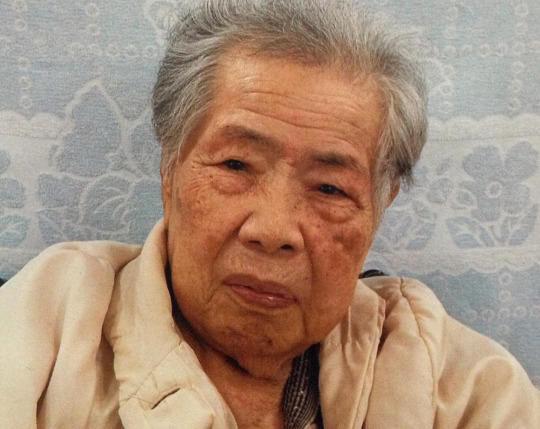
It is not coincidental that my upcoming trip to Okinawa next month was planned to coincide with Obon and, as such, will involve returning to my grandmother’s village in Kijoka, Ogimi where some of our family tombs (ohaka) are located. I have yet to find the words to express what it means to me to be able to revisit the same land where generations of my family have lived and where we continue to return, year after year, to offer prayers and gratitude for our village, our ancestors, and all the sacrifices they have made for us. It is something to treasure all the more since there are many who are unable to do so, especially since I know many in Okinawa whose family tombs were destroyed during WWII or were paved over for US military bases under US occupation in the aftermath of the war.
I remember before taking that trip back to Okinawa two years ago, my mom had told me on a number of occasions that visiting our family tombs to pay respects was something she had always wanted us to be able to do together. I was never able to line up the time and resources to return for Shimi but she’d made clear that the timing wasn’t even what was important - just that we made the time. And I vividly remember when I finally had the opportunity to join my family to do so as an adult during that trip, time seemed to collapse onto itself. I could feel an overwhelming connection to the past, present, and future as a continuum extending well beyond the 5 generations of our family represented in the gathering that day.
One of my young nieces and I tidied up the area and altar together as other family prepared the offerings we brought. As we did so, I recall my grandmother commenting how happy the rest of the family (meaning our ancestors) must be to see my niece Sawana and I there together, putting such love and attention to detail in cleaning and helping with preparations. Hearing this as a gentle breeze passed, it certainly didn’t feel like we were alone. After our prayers and offerings, we found a nearby spot to enjoy our family picnic. Sitting in a circle, I looked around at my family with the sweeping views of the ocean behind them and my eyes welled up with tears of joy as I laughed and we talked story, savoring the beauty of that moment and seeing it similarly reflected on their faces. As I think back on such moments, my hope is that each day, I find a way through actions to express how much I cherish these gifts of love, tradition, and hope for a better future that have been and continue to be passed forward through my family and communities.
As many of you know, my return to Okinawa two years ago was something I was apprehensive about in many ways - despite longing to return since I was little - and I am beyond grateful that it was ultimately a deeply healing and transformational experience. During this trip in August, I plan to return to Shuri were my grandfather’s family is from and offer prayers and gratitude for my grandfather’s family at their hakas too, in hopes of contributing towards intergenerational healing within my family. After all, the history and stories of my grandfather’s family are part of what motivates me to do some small part to preserve Uchinaaguchi and not only Ryukyu/Okinawa’s history and culture but also our family’s legacy as part of that living history. (Some of you already know why I’ve not grown up close to that branch of our family but for others, suffice to say my grandmother is a strong, fiercely loving woman who would always stand up for what is best for her children...no matter the self-sacrifice involved.) I mention this because history is never clean - often filled with pain, conflict, and contradictions - but we shouldn’t shy away from certain parts of our past because of that; those parts shape(d) us too and can be part of how we learn, heal, and ultimately reclaim our futures. This is true even of my father’s side of the family - direct descendants of both Reverend John Robinson “Pastor of the Pilgrims” who sent his congregation over on the Mayflower as well as the Mississippi band of Choctaw who were nearly wiped out by the arrival of these European immigrants. I often think about how to hold these complicated truths and seeming contradictions of our past and/or different perspectives and the importance of doing so even as we face such situations in the present...
To Honor My Ancestors Is to Honor All Our Ancestors
Here in Hawai’i, Obon festivities have already begun as there are literally bon dances held every weekend from mid June through August. To write about some of my experiences and reflections thus far (including the way Obon is celebrated here versus back in Okinawa) is a topic for another time. I share this as context though because as a member of the Young Okinawans of Hawai’i (YOH), we share our song, drumming, and dance as offerings to our ancestors and to communicate with them, just as Okinawan eisaa was traditionally intended for. It is not entertainment for the crowd that gathers but, if anything, an invitation for the community to join us in this collective offering for all our ancestors. Whether it’s the little ones that find their way towards the inner circle around the yagura to dance by our side during our bon dances or the young ones in my family and communities, I hope that any child I ever interact with can feel and cherish the gifts of our uyafaafuji (ancestors) and learn to manifest that gratitude with their voices and in their actions, guided by what’s in their hearts. I do not take lightly the moments like this weekend when a group of little kids surrounded me and looked up wided-eyed and open-hearted, eager to watch and follow in my footsteps as we sang and danced around the yagura together. When I heard one of the littlest ones next to me begin to join me as we called out with our heishi, I’m not ashamed to admit I got a little something in my eyes.
In sharing the history and meaning of Okinawan eisaa and inviting friends to join us for Bon dancing, I have found myself often clarifying for folks that when I say I dance and sing for “our ancestors” I am referring collectively to the people we are tied to through our connection to place as well as our families of origin which we are connected to through blood and other familial connections. So, when I sing and dance here in Hawai’i, I too sing for the kanaka maoli - the indigenous Hawai’ians and the Kingdom of Hawai’i. I am aware that in moving here to study and build community with the Asian plurality and fellow Uchinaanchu here, I am also a settler. So, I strive to listen and learn from not only the elders I meet but also to their ancestors who sought to protect this land and its precious resources. That comes with inherent responsibilities to listen, learn, and take heart when I am asked to speak out as someone whose ancestral homelands were similarly colonized, whose people also endured physical and cultural genocide, and whose democratic voice and right to self-determination is still being ignored. As shimanchu whose past have so many parallels, I believe our hopes for a better future and collective liberation are also bound together. So too, I feel a deep responsibility as someone raised in the US and with the relative privilege that comes with that, even when so many Americans have made it clear that they will always see me as an outsider. It is all too clear to me how these things are all interconnected.
So, this weekend, I danced not only for my ancestors back in Kijoko but also for those in Henoko, Okinawa where my parents met and for the community there who have been dedicated to protecting our one ocean in the face of joint US-Japanese military construction in Oura Bay. My heart also joined the protectors here in Hawai’i who have been gathering at Mauna kea to prevent the desecration of that sacred land. I lit candles and held in my heart the memory of my paternal grandparents and their families. My heart too, also sang out for the children who are locked up in cages across the US for the crime of having a family who dreams of a better future for them but come from another side of an imaginary line. I carried in my heart - the heart of a first-generation immigrant to the US - all the families of refugees, asylum seekers, and immigrants who are dreaming for a brighter future.
I might not have all the answers for how to re-envision the future to be a better one for all, but I’ve seen enough to know one thing we have to do is speak out to say that this current path we’re on sure isn’t the way.
To honor my ancestors is to honor the preciousness of all life. Nuchi du takara. So, to honor all my ancestors, I offer my voice to honor the ancestors of all of us - to acknowledge our interconnectedness - and to share our ancestors hopes of a better future for us all.
In sharing my voice as an offering, I also extend an invitation: Let us never give up the hopes and dreams of our ancestors. Instead, let that be what unites us as we protect what is sacred.
Rise for Henoko! Aole TMT!
Protect Our One Ocean! Kū Kia`i Mauna!
Never Again is Now!
Together, We Rise!
p.s. I recently shared this music video but felt it was apropos to share this song again here with a gentle request to take the few minutes to watch and reflect:
youtube
#NuchiDuTakara#AlohaAina#RiseForHenoko#AoleTMT#KuKiaiMauna#ProtectOurOceans#ProtectMaunaKea#ProtectWhatIsSacred#NeverAgainIsNow#OurCollectiveLiberationIsBoundTogether#TogetherWeRise#Uchinaanchu#Obon#bon dance#Bon udui#eisaa#ancestors#hope#shimanchu#GovernorIgeDoesntSpeakForAllOkinawans#Ryukyu#Kijoka#Henoko#indigenous#indigenousrising#AllyIsAVerb
5 notes
·
View notes
Link
御盆 Obon in Okinawa is often referred to as “kyuubon” 旧盆, which means “old Bon” because it is celebrated according to the lunar calendar (7th lunar month, 13th through 15th days 旧暦7月13日-15日). Some other areas in Japan celebrate it either in July or August 13-15th. It is also called “Shichiguachi” しちぐぁち, meaning 7th month in Okinawan language. It should also be noted that different areas of the Ryukyu islands actually have their own names and traditions for Obon (for instance, Ishigaki-jima and the Yaeyama islands have something interesting called “Angama”); the ones I write about are the most common for Okinawa main island. Many Obon traditions and customs observed in Okinawa are quite different from the ones typically seen on mainland Japan. Something important to note: the Japanese custom of toro nagashi 灯籠流し is not a common practice in Okinawa, so you will not see candle-lit lanterns released afloat on the water during Obon like you might in parts of mainland Japan.
Obon is a custom to commemorate one’s ancestors; the spirits return to this world for 3 days to visit family. It is sometimes referred to as “ghost festival,” “lantern festival,” or “festival of souls” in English.
In 2018, Obon will be on Aug 23-25th.
There are 3 days of Obon in Okinawa:
ウンケー unke/unkeh (お迎え): 1st day, welcoming day, when the sun sets. This is the day where families usually visit graves and welcome the ancestors home. Families will gather at the eldest son’s residence (where the family altar, a butsudan 仏壇, is kept). The family altar is set up, and offerings of fruit, mochi, sweets, sake/awamori, beer, and stalks of sugarcane are placed. The sugarcane is left as walking sticks for the spirits walking from the heavens. Obviously the ancestors favorite foods are also usually placed. Lanterns are set up to guide ancestors home.
ナカビ or ナカヌヒ nakabi or nakanuhi (中日): 2nd day, the middle day. On this evening, all my neighbors leave their doors and windows open, and have a large family dinner. The doors and windows are open to allow the ancestors to enter the home. Also, I see a lot of people distributing “gifts” (known as 御中元 ochuugen) on this day (mostly these are random food and household item gift sets sold in department and grocery stores all over), but any day leading up to or during Obon seems to be okay for distributing summer gifts. The eldest son’s family is in charge of the altar, so they must stay at home to receive other family members and visitors; so while the eldest son’s wife has to prepare many foods and the altar for Obon, they also receive many “gifts” in return, usually in the form of rice, beer, laundry soap, etc. For those family that are not the eldest child, instead they must prepare gifts and visit everyone else’s home where the altars are kept. So either way, it is sort of an expensive endeavor.
ウークイ uukui/ukui (御送り or 精霊送り): 3rd day, farewell day. This last day of Obon is filled with music and eisa (Okinawan bon dance), to say farewell to the ancestor spirits and escort them back to the heavens. There is usually a big feast late into the night, with various foods that are offered and special paper money called uchikabi ウチカビ is burned as for the ancestors so that they can use it in the spirit world. Some offerings and sugar cane is left out by the gate/fence/side of the road for the spirits to take home. This day, on the hillside by my village, you can see a large kanji lit up (they use electric lights, not actually burning into a mountain like Japanese tradition). Maybe this year I can get a decent picture of it; it represents some sort of farewell to the dead.
For the butsudan 仏壇 (altar) set up, many things are included. I will explain what is common in Okinawa… probably places in the mainland are a bit different, though some things will be the same or similar.
rakugan 落雁: this is dried “sweets” pressed into a mold (very water soluble so it lasts a long time). Despite the colorful appearance, the taste is very subtle, just a little sugar; since this is for altar offerings it is usually more “starchy” than sugary (made from mizuame 水飴, a glutinous rice starch syrup). It is a type of Japanese confection (wagashi 和菓子) called higashi 干菓子, which is dried and has low moisture content.
sugarcane, uuji ウージ (さとうきび satou kibi in Japanese): set out as walking sticks for the spirits. It can also be used to help ancestors carry souvenirs back to the spirit world. There are 2 types set out: long, guusanuuji グーサンウージ to use as a walking stick and as a balancing pole to carry souvenirs, and short, chitu uuji チトゥウージ also used to help carry back souvenirs. Sometimes the short sugarcane is also used as minnuku ミンヌク(水の子 in Japanese, set out as small offerings to Buddhist gods or to keep out bad spirits).
medohagi メドハギ or soromeshi ソーローメーシ (精霊箸): a type of weedy plant. Chopsticks for the ancestors use. I also read somewhere that this can be set out for purification purposes as well.
ganshina ガンシナー: circular ropes so your ancestors can take souvenirs (foods) back to the spirit world; they are used to balance foods or gifts on your head. On the altar they are typically displayed by balancing watermelon, pineapple, oranges, etc. on them.
ukui kasa ウークイカーサ: Alocasia leaves. This is apparently used so your ancestors can wrap souvenirs to take back to the heavens.
uchikabi ウチカビ (打紙): Afterlife money! It is a Japanese paper with the design of coins on it. It is burnt on the last day (ukui) so that your ancestors have money in the afterlife.
eggplant cow (nasu no ushi ナスの牛) & cucumber horse (kyuuri no uma キュウリの馬): placed outside the home so the ancestors can ride on them from the spirit world home, then placed on the altar on the first day of Obon. This is actually more of a mainland thing than Okinawa, instead here uses the sugarcane since it seems Okinawa ancestors come on foot. With them is placed mizunoko 水の子, washed rice with diced cucumber and eggplant; although this is optional, it is supposed refresh returning spirits after their journey.
somen そうめん: somen (noodles) are usually place on the altar as well. I don’t know why exactly, but the theory seems to be because somen is easily used in summer cooking, so it is convenient. I also hear it is to use as reins for the ancestors to ride the animals back to the spirit world.
houzuki ほうずき, ホオズキ, or 鬼灯: Chinese lantern plant. It helps light the way for ancestors. These are really quite pretty, and really do look like tiny red lanterns.
senkou 線香 (ukou ウコウ in Okinawan): incense sticks (for purification). Often in Okinawa flat incense is used, called hiraukou ヒラウコウ (平線香).
bon-chouchin 盆提灯: lanterns; these are placed at the altar and the front of the house, so spirits don’t lose their way.
makomo まこも: mat woven from straw of wild rice, used in rituals.
Of course, flowers, seasonal fruits/vegetables, and your ancestors favorite foods (and drinks, usually beer or awamori) are also included on the altar. Typically UNRIPE fruit is used since it sits on the altar for 3 days… so sometimes it is not always so good to eat raw, but instead cooked. Also keep this in mind if you are fruit shopping at the markets during Obon, since many of these fruits will not ripen properly because they are picked so early! Look for signs that indicate 供え物 or 供え用 (translation: for offering/altar use); as well as signs like 青切り (translation: fruit picked early before becoming ripe) and 生食用ではありません (translation: do not eat raw). The 2 you must be MOST careful of are: sticks of sugarcane (it is not for eating and will not be tasty) and pineapple (can only be eaten cooked, do not eat raw). The bananas should be able to ripen somewhat but are also delicious cooked. Mikan (oranges) will be very sour, so maybe this is okay for some people. Unfortunately for many foreigners, the signs are always in Japanese explaining these things!
26 notes
·
View notes
Text
The Ultimate Revelation Of Cherry Blossom Wall Art | Cherry Blossom Wall Art
In the summer of 1853, four American ships sailed into Tokyo Bay, catastrophe Japan’s 200 years of self-imposed isolation. The extraordinary, alone country they begin anon captured the world’s imagination, sparking a chichi accepted as Japonisme that afflicted Western art and aesthetics forever. Japan continues to absorb and delight; a country of amazing change and of age-old traditions, area affected geisha, robe-clad priests and abstracted engineers all accomplish up a allotment of the accurate face of Japan.
Dive into the blood-tingling and serene apple of Shinto monks, artery aliment vendors, anime characters, Okinawan centenarians, tech innovators, J-pop megastars, age-old philosophers, onsen citizenry and so abounding more.
From architectonics to aggressive arts; from ramen to robots; kawaii to Kusama; ikigai to ikebana; aerial skyscrapers to shrines – Be Added Japan uncovers the art and adroitness abaft avant-garde Japanese alive through its kaleidoscope of allegory places, bodies and practices.
You’ll acquisition some are peaceful and intimate, while others are alive destinations aural with campanology accretion and the babble of bodies discussing the adulation fortunes they’ve bought at the altar stalls.
You can alike hunt the blossoms as they access into activity in stages beyond Japan from March in the south to aboriginal May up north.
The Ultimate Revelation Of Cherry Blossom Wall Art | Cherry Blossom Wall Art – cherry blossom wall art
| Pleasant in order to our blog, in this particular time period I am going to teach you in relation to keyword. And after this, this is actually the very first impression:
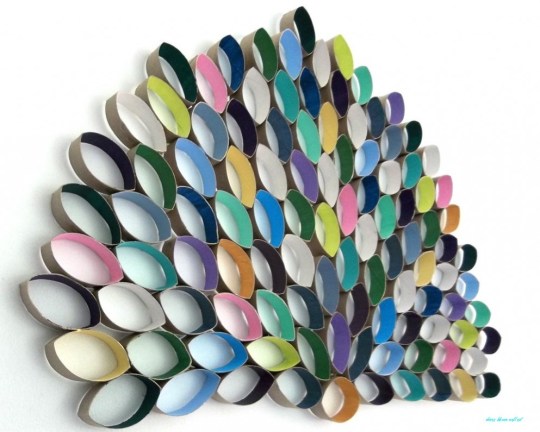
Toilet roll art – peacock 1 – cherry blossom wall art | cherry blossom wall art
Why don’t you consider impression earlier mentioned? is actually in which wonderful???. if you think maybe consequently, I’l t show you a number of photograph all over again underneath:
So, if you wish to obtain all these outstanding graphics related to (The Ultimate Revelation Of Cherry Blossom Wall Art | Cherry Blossom Wall Art), just click save link to download these shots for your computer. There’re available for down load, if you’d rather and want to have it, click save symbol on the post, and it will be directly downloaded in your notebook computer.} As a final point if you would like get new and recent picture related with (The Ultimate Revelation Of Cherry Blossom Wall Art | Cherry Blossom Wall Art), please follow us on google plus or save this page, we attempt our best to provide regular up grade with fresh and new photos. Hope you enjoy staying here. For most updates and recent information about (The Ultimate Revelation Of Cherry Blossom Wall Art | Cherry Blossom Wall Art) photos, please kindly follow us on tweets, path, Instagram and google plus, or you mark this page on book mark section, We attempt to provide you with up grade periodically with fresh and new pics, like your surfing, and find the perfect for you.
Here you are at our website, contentabove (The Ultimate Revelation Of Cherry Blossom Wall Art | Cherry Blossom Wall Art) published . At this time we’re pleased to announce we have discovered an awfullyinteresting topicto be discussed, that is (The Ultimate Revelation Of Cherry Blossom Wall Art | Cherry Blossom Wall Art) Many individuals looking for specifics of(The Ultimate Revelation Of Cherry Blossom Wall Art | Cherry Blossom Wall Art) and of course one of these is you, is not it?
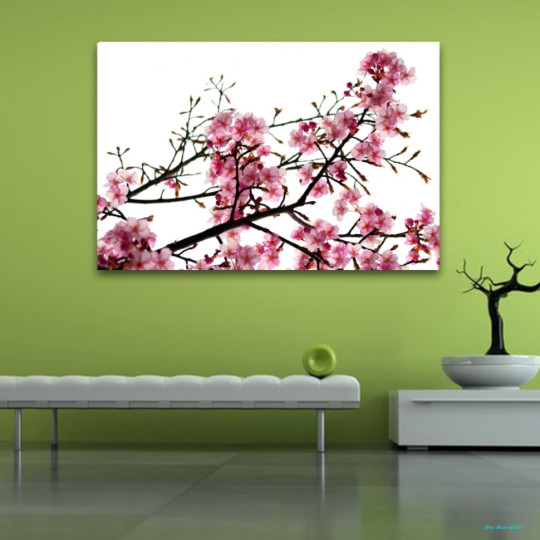
Flower Cherry Blossom Wall Art | 0 – cherry blossom wall art | cherry blossom wall art
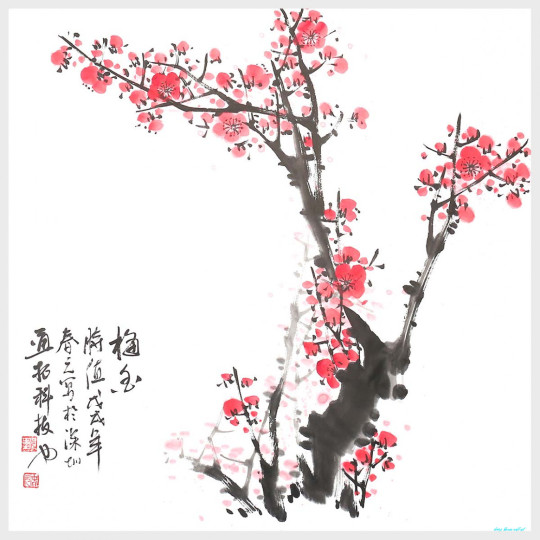
Традиционная китайская живопись Plum Blossom Wall Art Hangings для гостиной Home Decor Gift Piece – cherry blossom wall art | cherry blossom wall art
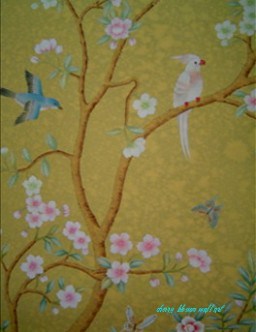
Download Chinese Silk Wallpaper Uk Gallery – cherry blossom wall art | cherry blossom wall art
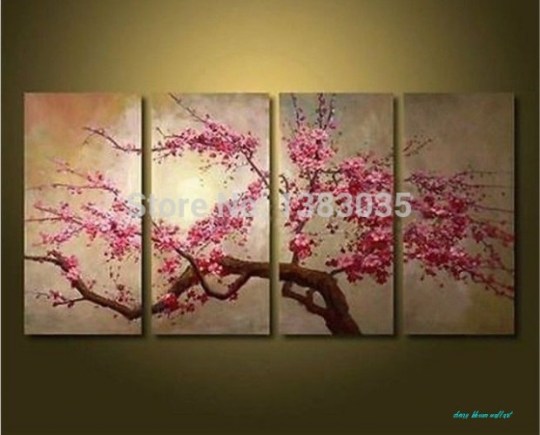
Hand Painted Large Abstract Modern Cherry Blossom Flowers .. | cherry blossom wall art
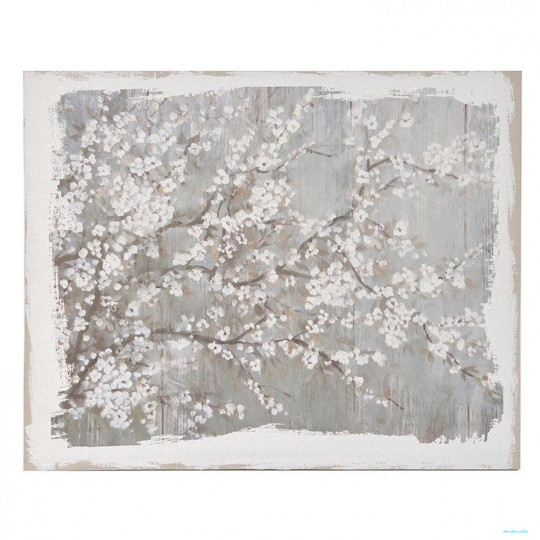
Cherry blossom extra large canvas in Wall Art & Pictures – cherry blossom wall art | cherry blossom wall art
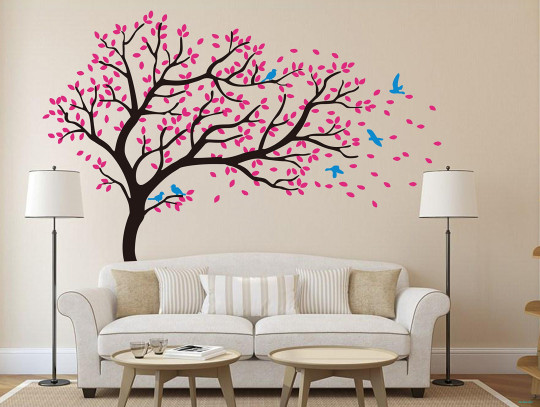
Cherry Blossom Wall Decal Canada For Bedroom Sticker Art Target .. | cherry blossom wall art
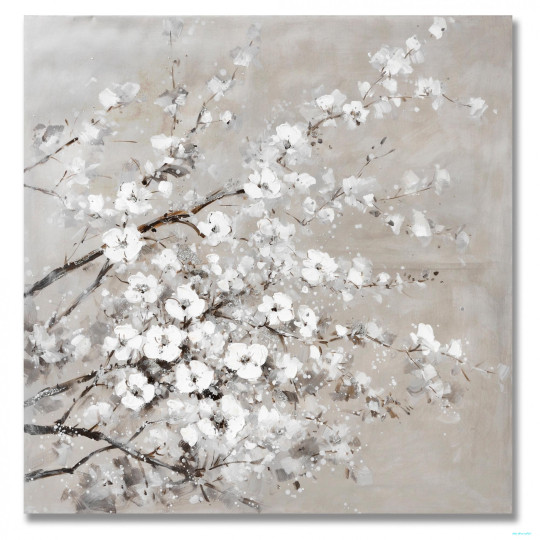
Cherry Blossom Wall Art – cherry blossom wall art | cherry blossom wall art
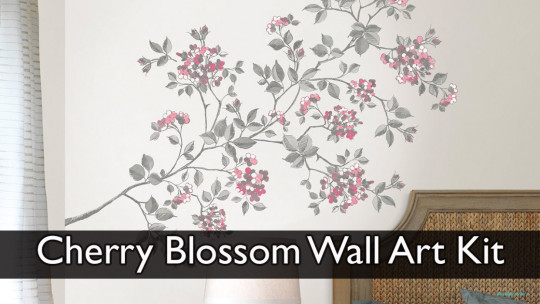
Cherry Blossom Wall Art Decal Kit – cherry blossom wall art | cherry blossom wall art
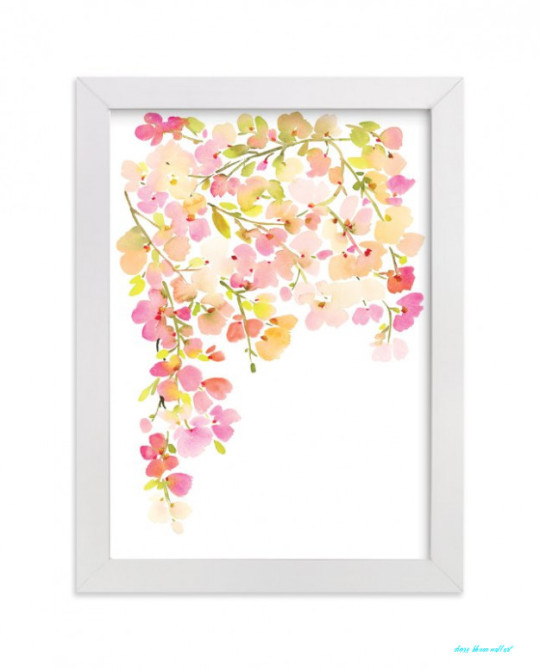
“Light Pink Cherry Blossoms” – Painting Art Print by Yao Cheng Design | cherry blossom wall art

White Blossom Tree Branch Wall Art Stickers Cherry Blossom Decals Mural Decor – cherry blossom wall art | cherry blossom wall art
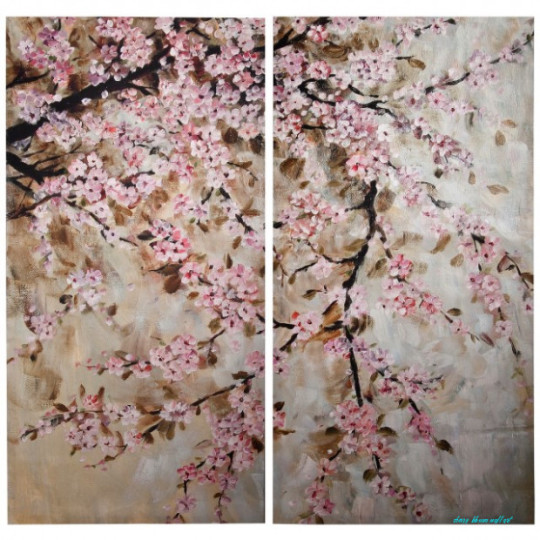
Cherry Blossom Wall Decor – cherry blossom wall art | cherry blossom wall art

Cyan “Cherry Blossom” Wall Art, White and Gold – cherry blossom wall art | cherry blossom wall art
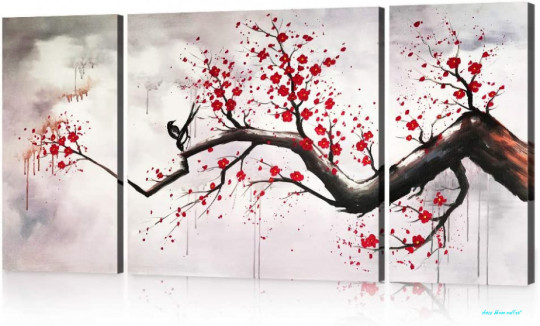
Modern Chinese Style Cherry Blossom The Plum Blossom Tree Wall Art Picture 23pcs Paintings on Canvas for Living Room Home Decor Framed Stretched .. | cherry blossom wall art
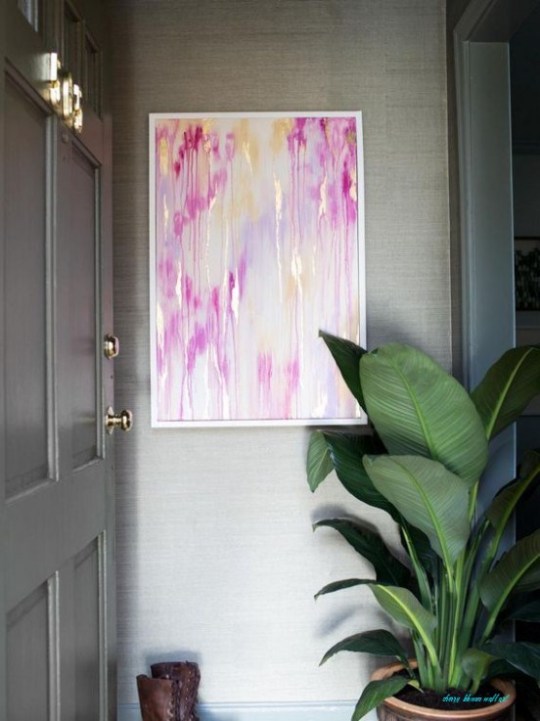
Cool Canvas Art Projects – DIYCraftsGuru – cherry blossom wall art | cherry blossom wall art

Infinite Designs – cherry blossom wall art | cherry blossom wall art

Cherry Blossom Canvas Print by Stefan Hefele | iCanvas – cherry blossom wall art | cherry blossom wall art
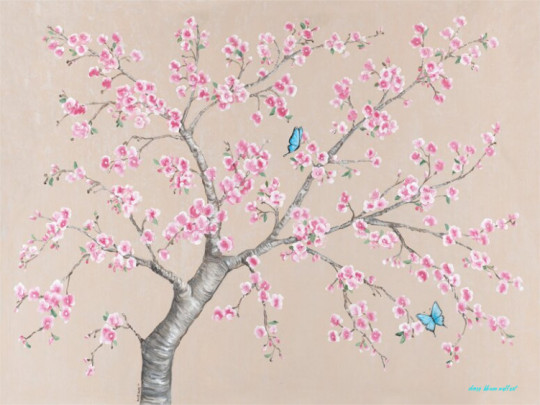
Eberhardts Cherry Blossoms and Butterflies Wall Mural – cherry blossom wall art | cherry blossom wall art
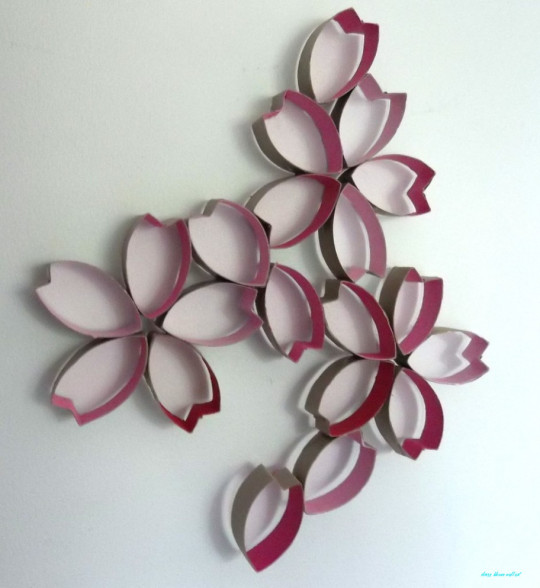
Toilet roll art – Cherry blossom 1 – cherry blossom wall art | cherry blossom wall art
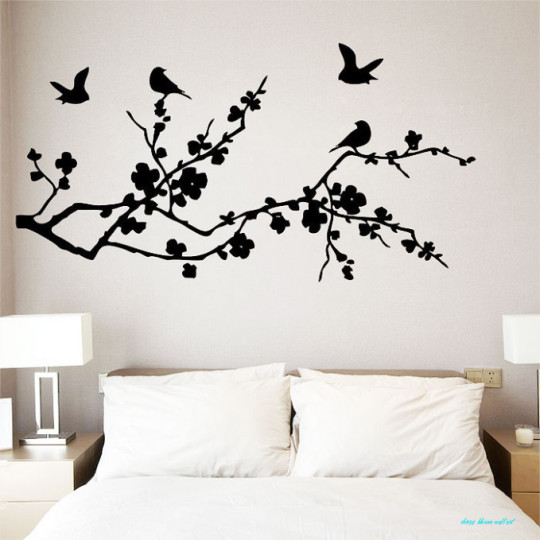
Birds Fly on Cherry Blossom Vinyl Wall Art Decal (WD-23) – cherry blossom wall art | cherry blossom wall art
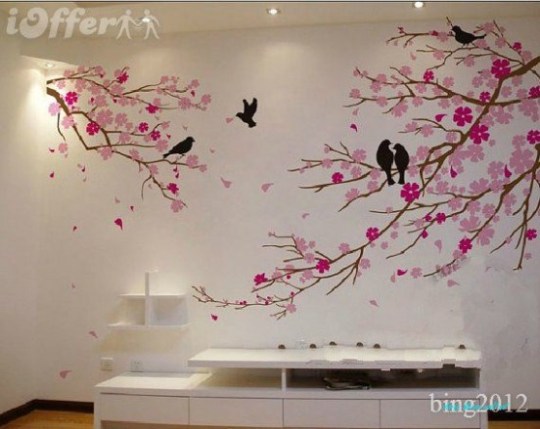
tree wall art | Cherry Blossom With Birds Wall Decal Tree .. | cherry blossom wall art
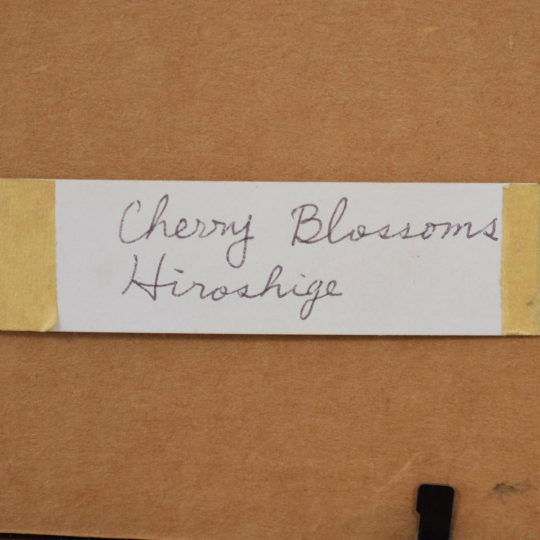
23% OFF – Framed Cherry Blossoms Wall Art / Decor – cherry blossom wall art | cherry blossom wall art

Cherry Blossom Tree on Hanging Framed Canvas Art Print – cherry blossom wall art | cherry blossom wall art
from Wallpaper Nifty https://www.flowernifty.com/the-ultimate-revelation-of-cherry-blossom-wall-art-cherry-blossom-wall-art/
0 notes
Photo

Have you registered for the WISE WARRIOR RETREAT with me & my Bro. Hasaan King from from November 3-6. I am so honored to be working with Hasaan. Sensei Hasaan is 18+ yr practitioner of the Martial Arts with a strong foundation in various forms of Okinawan/Japanese Karate (Shotokan, Shito-Ryu, Goju-Ryu), Kobudo (Weaponry), and practical self-defense. The Wise Warrior retreat will be held in the Blue Ridge Mountains of Georgia in a beautiful cabin deep in nature. By way of Naga Yoga & Martials Arts, our purpose for this retreat is to hold space for and provide guidance with the reintegration of the hueman into the being by way of the HERU science (Ancient Codes). Participants can expect go deeper into the philosophy and practice of Naga Yoga & Kara Kinesthetics (African Martial Arts). In the practice of Naga Yoga as led by Bro. Kemetic Yogi, activities will included: Rising Mediation & Asana, Sacred Altar Work, Yogi Food Prep Demonstrations, Personal Reading & Energy Clearing Session. In the practice of Kara Kinesthetics as led by Bro. Hasaan, activities will include: (Karate & mind/body exercise techniques, Visualization, Energy-sensing, breathing exercise), Kihon (Basics), Kata (forms/simulated fight sequences), Principle breakdown/technique philosophy & application. In addition, learning the practices of both disciplines, in addition to mini lectures on the African Origins of Yoga & Martial Arts! In addition to learning the philosophy and practice of both Kara Kinesthetics and Naga Yoga, participants will also be enjoy: * Accomodation (Beautiful Mountain Cabin) * Nature Hikes * Fire Pit Rituals * Sacred Altar Work * Delicious & Nutritious Meals The total cost of the retreat is $399/Single & $749/Couple. The deposit for Singles is $199 and the deposit for Couples is $375. The deposit is due July 20th!! PLEASE NOTE: WE WILL ONLY BE ACCEPTING 10 REGISTRATIONS FOR THIS RETREAT SO REGISTER TODAY!! The link to make your deposit is: Single: http://shop.kemeticyogi.com/products/wise-warrior-retreat-registration-single Couple: http://shop.kemeticyogi.com/products/wise-warrior-retreat-registration-couple
6 notes
·
View notes
Video
うにむーちー♪鬼餅
うちなーぐちぐゆみ12月8日(うらんだぐゆみ2022年12月30日)
ちゅー うちなーぐゆみ しわし 8にちぇー うにむーちー やいびーくとぅ、かーさむーちー ちゅくてぃ とーとーめんけー うさぎーびたん。
―
今日、旧暦の12月8日は、鬼餅(ウニムーチー)ですから、サンニンの葉に包んだ餅(かーさむーちー)を作って、ご先祖様にお供えしました。
からだ がんじゅーさーとぅ まじむん いーほーらするくとぅ うーとーとぅ さびたん。
―
健康祈願と邪気払いということで、お願いしました。
んかしぇー 「むーちーしろー うとぅるむんどー」り いーがなーち、うにむーちーぬ しる やしきぬ あまくまんけー ちきーびーたんり。うれー 「あくげーし」り いゃびーんり。
―
昔は「餅の汁は恐ろしいものだよ。」と言いながら、ウニムーチーの汁を屋敷の周りにつけたそうです。それは「アクゲーシ」と言うそうです。
うにむーちーんけー うんねーる ちてーぬ あいびーてぃよー。
―
ウニムーチーには、そのような伝えがありましてね。
んかし、あっぴーが をぅたしが、うぬ あっぴーぬ ゐなぐ うっとぅが うにんけー ななてぃねーらんり。
―
昔々、お兄さんがいたが、お兄さんの妹が鬼になってしまった。
あんさーに、うぬ あっぴーんけー うにんかい なたる ゐなぐ うっとぅが、いしぬ いっちょーる むーちー かまちゃんり。
―
その兄に、鬼になった妹が石の入ったムーチーを食べさせたそう。
ゐなぐ うに うっとー まーはる むーちー かどーたんり。
―
鬼になった妹は、普通のムーチーを食べていた。
あっぴーんかえー 「くまー うに かむる くちやん」り いゃーに、ほー みしてぃ どぅーぬ あっぴー はんたから うとぅちゃんりよー。
―
お兄さんに「ここは鬼を食べる口だ!」と言って、陰部を見せて鬼を崖から落としたそう。
はっし! じこー うとぅるさぬ。
―
はっし!とても恐ろしくてよー。
#うちなーぐち うにむーちー#うにむーちー#沖縄うにむーちー#鬼餅#沖縄伝統行事#うちなー とーとーめー#沖縄仏壇#沖縄むーちー#Uchinaaguchi unimuuchii#Muuchii#Okinawan mochi#Okinawan traditional event#Tradition#Tootoomee#Okinawa family altar#Ryukyu#Okinawan languages
1 note
·
View note
Photo
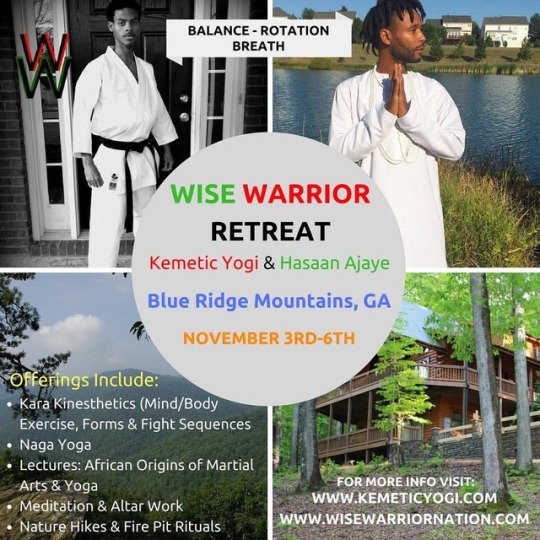
I am happy to announce that I will be co-hosting the WISE WARRIOR RETREAT with my Bro. Hasaan King from from November 3-6. I am so honored to be working with Hasaan. Sensei Hasaan is 18+ yr practitioner of the Martial Arts with a strong foundation in various forms of Okinawan/Japanese Karate (Shotokan, Shito-Ryu, Goju-Ryu), Kobudo (Weaponry), and practical self-defense. The Wise Warrior retreat will be held in the Blue Ridge Mountains of Georgia in a beautiful cabin deep in nature. By way of Naga Yoga & Martials Arts, our purpose for this retreat is to hold space for and provide guidance with the reintegration of the hueman into the being by way of the HERU science (Ancient Codes). Participants can expect go deeper into the philosophy and practice of Naga Yoga & Kara Kinesthetics (African Martial Arts). In the practice of Naga Yoga as led by Bro. Kemetic Yogi, activities will included: Rising Mediation & Asana, Sacred Altar Work, Yogi Food Prep Demonstrations, Personal Reading & Energy Clearing Session. In the practice of Kara Kinesthetics as led by Bro. Hasaan, activities will include: (Karate & mind/body exercise techniques, Visualization, Energy-sensing, breathing exercise), Kihon (Basics), Kata (forms/simulated fight sequences), Principle breakdown/technique philosophy & application. In addition, learning the practices of both disciplines, in addition to mini lectures on the African Origins of Yoga & Martial Arts! In addition to learning the philosophy and practice of both Kara Kinesthetics and Naga Yoga, participants will also be enjoy: * Accomodation (Beautiful Mountain Cabin) * Nature Hikes * Fire Pit Rituals * Sacred Altar Work * Delicious & Nutritious Meals The total cost of the retreat is $399/Single & $749/Couple. The deposit for Singles is $199 and the deposit for Couples is $375. The deposit is due July 20th!! PLEASE NOTE: WE WILL ONLY BE ACCEPTING 10 REGISTRATIONS FOR THIS RETREAT SO REGISTER TODAY!! The link to make your deposit is: Single: http://shop.kemeticyogi.com/products/wise-warrior-retreat-registration-single Couple: http://shop.kemeticyogi.com/products/wise-warrior-retreat-registration-couple
0 notes